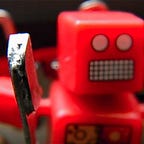Was 2022 the Year AI Went Mainstream?
2022 may have been a watershed year for the mainstreaming of AI-assisted creative practice. The AI written and shot-logged film SAFE ZONE unpacks some fun social dynamics. The team “Yaboi Hanoi” won the 2022 AI Songwriting contest using Thai tuning. And AI-powered image making has exploded with tools like Lensa, DALL-E, and Midjourney making their way into art houses and home processors. The portrait “Edmond de Belamy” generated by an algorithm of the Obvious collective out of France sold for $432,000 at Christie’s earlier this year.
One of my favorite “popular encounters with AI” in 2022 was hearing a country station prompt ChatGPT (a beta platform developed by OpenAI) to “write a country song about my carpet.” One of the in-studio DJs then set out to play the thing. It had at least none genuine moment of that down home lyricism to make the tear ducts tighten.
As we roar around the bend and into this new territory of human-AI collaboration, here are a few of my questions; what are yours?
1. Garbage in, garbage out? Most of these popular forms of “collaboration” rely on existing data scraped from the Internet. At best AI-drive creativity can help us generate new associations between unlike things. At worst this means that the tools are bottom-feeding on our biases — and reproducing them.
2. Unattributed mimicry? Visual generation tools rely on vast image sets — often the open Internet — to address prompts and reproduce popular imagery, styles and textures in art. At the same time, artists depend on the Internet to market their work. What’s to prevent our images (or words or sounds) images shared for one purpose from being abused — to infringe upon and expand say, an artists’ fantasy universe in a new game?
3. A labor discount? Its still unclear to me where “inspiration” comes from — an unconscious mashup of our waking stimuli and sleep processing, fuse set by a coincidental “flash point” that may come from bone-tiring exertion as much as that fateful shot of asbinthe. What is the role of labor — the mastery of one’s materials, tools and process — that accounts in the “value” of AI-powered art?
4. The idea or the object? One of the drivers of AI collaboration in art for many seems to be the novelty of putting unlike ideas — images, words, sounds — into a prompt field and experiencing the elation of “discovery” when seconds later some entirely new and yet recognizable thing is manifested on the screen before us. I sense a correspondence to a slot machine. Nonetheless, that idea is encoded digitally, a prisoner of its own media until manifested physically — as a vinyl print, a photographic transfer? Where in the value chain does the artist’s mastery of materials, tools and processes reside and does it matter because the idea — the Prompt — is where creativity now resides? (“In the beginning was the word…”).
5. Can artists have bread and our butter too, please? For the longest time, I’ve enjoyed the antiquated idea that working artists can “get by” in our economy by working as designers, fabricators, production assistants, illustrators and animators, concept artists and the like in many “adjacent” industries such as advertising. I wonder however, with the ease of securing “original” or novel ideas through AI collaboration, whether many of these supporting roles within industry will become obsolete. And does it matter or do we chalk it up, like manual labor in the post-industrial factory, to the arrow of progress?
6. Where’s the value-add? A lot of what I seen in AI-powered art today reads either like flattened versions of pop surrealism — some with advanced use of Adobe Illustrator filters. With nominal effort, much of what is created could be made with solid pen-and-brush skills — and those two secret ingredients, time and effort. Perhaps where these tools will excel is akin to a “brainstorming” phase — those mood board processes where you want to crank through a lot of inspiration quickly to hone in on lasting concepts. The value resides less in the production of any single work than the generation of powerful and lasting concepts.
Overall, I find myself much less concerned with theories of production and questions of “authenticity” than what the insertion of yet another intermediating technology does for our social structures — the ties that bind us together as human beings.
There are many reasons to be skeptical of the question, the looming shadow of historical fact among them. So I’ll save the question for another bit of writing. But what’s your thought on AI in art — boom or bust or something else?
